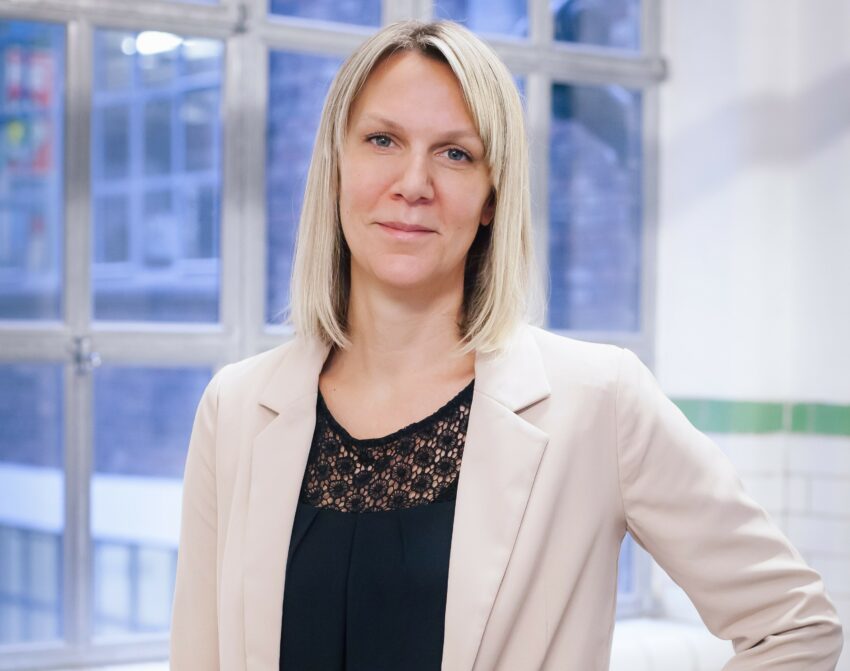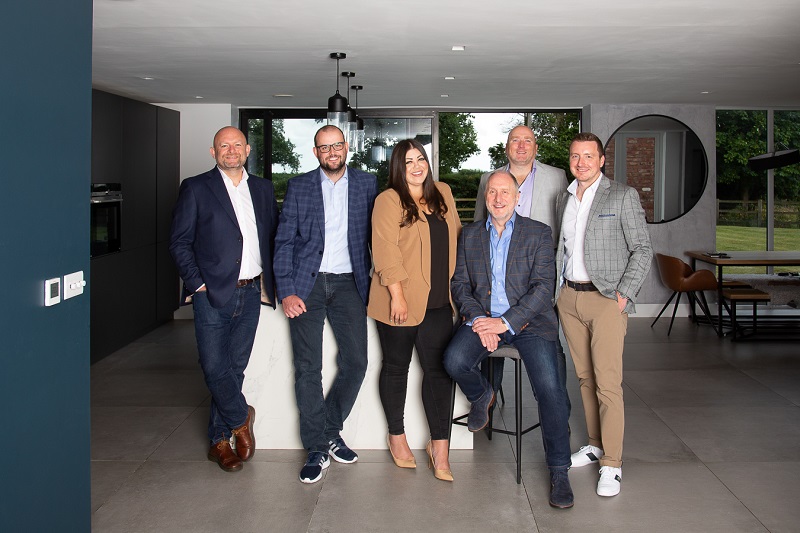Every employer wants a happy and productive workforce, but not everyone knows how to achieve it; Alicja Lloyd, CEO of marketing agency Feed, says holistic measures based on improving the relationships between leaders and staff will change things for the better.
Tackling overworking and presenteeism
For Lloyd, low productivity is when teams are overworking, which, she says, usually comes from lack of direction from management: “I think about those times when I was working until midnight, and I think a lot of it came from the disorganisation from the top where they didn’t have a clear view of where they wanted a pitch response or project to go.”
She’s seen how staff can overwork on projects when there “wasn’t a relationship with the client where they could be more open” and admit they went in the wrong direction or needed a bit more time.
“It was always that sense that you had to respond within a couple of hours or by the next morning, which then put that pressure straightaway on the team to be able to deliver that,” she adds.
Lloyd believes that reassessing the way teams work on client projects, where they should act as “collaborators” rather than “suppliers,” can build a stronger client relationship, which means better management of project expectations, better team management, and workforce wellbeing.
Telling staff not to overdo it on the hours is one thing, but the culture of presenteeism, when employees work long days in the office to appear productive, is an insidious workplace practice and hard to eradicate.
Lloyd says the culture against presenteeism at Feed is “quite organic” and driven by their founder, who has always promoted a work/life balance: “Sometimes, you do need to put the extra hours, we are an agency like any other, but I think we also try and lead by example,” she says.
Improving productivity
She thinks it’s the responsibility of managers to investigate why teams might be working too much: “It might be that they need a bit of guidance of how to do things differently. It could even be there’s something that we can optimise in terms of our process,” she says.
“Recently, we saw that the workload on a particular client was getting much higher, so we took a step back and thought, okay, so what is the process that we’re doing? And there was one particular process on copy where we needed to put things into a certain document for a client, but we were actually developing the copy in our own internal document. And it was a simple question of why are we doing it that way? Because it was the copying and pasting of information between one document to another that was creating a lot of work.”
She says leaders must get “more rigid in the way you review work and how many feedback cycles you have,” as this could improve productivity within teams and also improve the client relationship: “If we have to do multiple rounds, it’s adding to the hours that you’re working, and that’s putting the additional pressure on our client teams and client partners which is something we don’t want to happen.
“So I think it’s about that collaboration and communication internally, but with our clients too. If there is a crunch point, it’s about having that discussion around priorities, like how should we stagger this work so that we can make sure that we’re doing it in the right way and the team has the right focus?”
Another way that Feed promotes a productive culture is via clear working hours: “When we were all in the office at half-past five we would be cleared out, which I think is really important and positive, as it means that we are working effectively,” she adds.
Building better relationships
Lloyd says communication won’t be effective unless managers have intimacy with their staff: “I think a lot of it is also having that management structure in place where each team leader is close enough to their team that they know the hours that they’re working and can highlight if anyone is looking like they’re putting too much effort in.”
She thinks good management is also about showing that the rewards aren’t necessarily reaped from those that work all the hours: “I feel like in the agency it’s well known that late hours aren’t expected, and our teams do raise their hands quite regularly if they’re feeling like the workload is getting a bit too much.”
While staff feedback is evidence of a good working relationship between leadership and the workforce in Feed, this isn’t the case in many workplaces. Poor communication fuelled by non-existent team relationships is common; rendering teams overworked, burnt out, and unsure of how to ask for help.
In fact, new research from Spill, a mental health startup, found that many employees don’t feel comfortable asking managers for time off and are worried doing so could affect their career progression, making it likely that staff would be equally unsure about telling managers that they’re struggling with a task or workload.
Supporting working mothers
Lloyd believes COVID-19 might have taught employers a lesson about offering women more flexible working options which could boost female retention rates and stop that employment drop when they leave the workforce to have children which also contributes to the gender pay gap.
“I feel like, before COVID-19, a lot of professional women when they had children felt there wasn’t that flexibility of being able to work remotely because there was the focus on long office hours; I think they chose to leave an industry because they didn’t feel that it was going to be compatible with being a mum.”
She shares her own experience of becoming a mother while pursuing her career: “When I first went back to work, after having my son, my boss at the time actually told me that I shouldn’t talk about my son because I was in a work environment now. It wasn’t the best experience.”
Yet, she stood her ground: “I put less pressure on myself because I listened to myself. I allowed myself time to adjust to my new role as a mum and working mum. It’s about being able to feel that your career is rewarding and that being a mother is rewarding. It’s allowing both sides to have their own space.
“I trained myself to have that confidence to leave work on time; it was something that was a conscious decision that even if I needed to finish off something at home, later on, I just made sure that I was visible and I was setting that expectation right from the outset.”
So, does she advise new mothers at Feed to follow a similar approach? “Everybody’s different. Some working mums might come back absolutely raring to go and not need that space and time. So it’s about listening to yourself, but I definitely think it’s setting the expectation that you can have a schedule that’s flexible around your needs.”
As a mother, she says “having something to go home for” has improved her time management which she used to impose better management on client projects: “I find a lot of the clients that I’m working with also have their own family lives and the men that I work with are much more prevalent in their children’s lives then maybe they would have been 20 years ago. Also, they appreciate that relationship and expectation management and being able to work more collaboratively and at a more considered pace.”
Leadership styles in the ‘new normal’
Lloyd says all the right things; that leadership must be empathetic, and staff should be seen as whole people and not just professionals. To put this into practice, she’s established a set of “leadership principles” where managers can be true to their respective leadership styles while ensuring consistency: “So whether you’re more direct or coaching in your style, it’s really important to be consistent, because there’s nothing worse than when you’re not sure how to respond, but it’s mainly about being an active listener.”
She advises that managers “make sure that you are really thinking about the how and the why of what’s being said, so it’s not just a functional exchange” and adds that “it’s about making sure that you take accountability for your team, so when something isn’t going 100% to plan, you step in and help them.”
For Lloyd, effective leadership is about flexibility as well as responsibility: “If you set a direction, the team might have a realisation that they want to try something in a different way. I think as a leader, it’s really important that you give that voice to your team and allow yourself to be persuaded and that you aren’t just rigidly firm, that you’re willing to be moulded and be re-directed by your team if appropriate.”
Another way Lloyd helps craft a pleasant and inclusive work environment is through employee networks, where groups including LGBT+ staff can discuss issues that can turn into company initiatives. At the same time, they also act as educational hubs for colleagues on community matters: “One of the things that came out recently was that bank holidays are fairly specific to one religious group, so the team felt it would be a positive way forward to implement a religious and cultural holiday swap, whereby the team were able to sort of swap the traditional bank holidays for other important days within their calendars but didn’t have to take it as holiday.
“It’s important to get the voices of people who are coming from different perspectives to me because you can’t necessarily know the change that needs to happen. You need to be working in partnership to help move that forward.”
What underpins Lloyd’s views on effective leadership and a harmonious workforce are good relationships. If organisations find their messages to staff about mental health, workload, or D&I support isn’t being met with a response, perhaps there are deeper issues they need to work on first.









